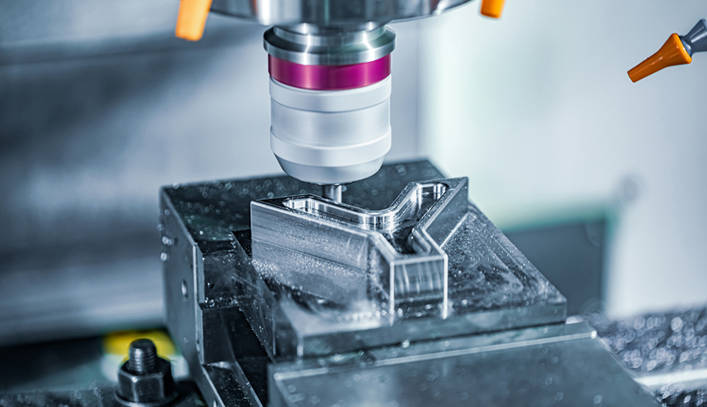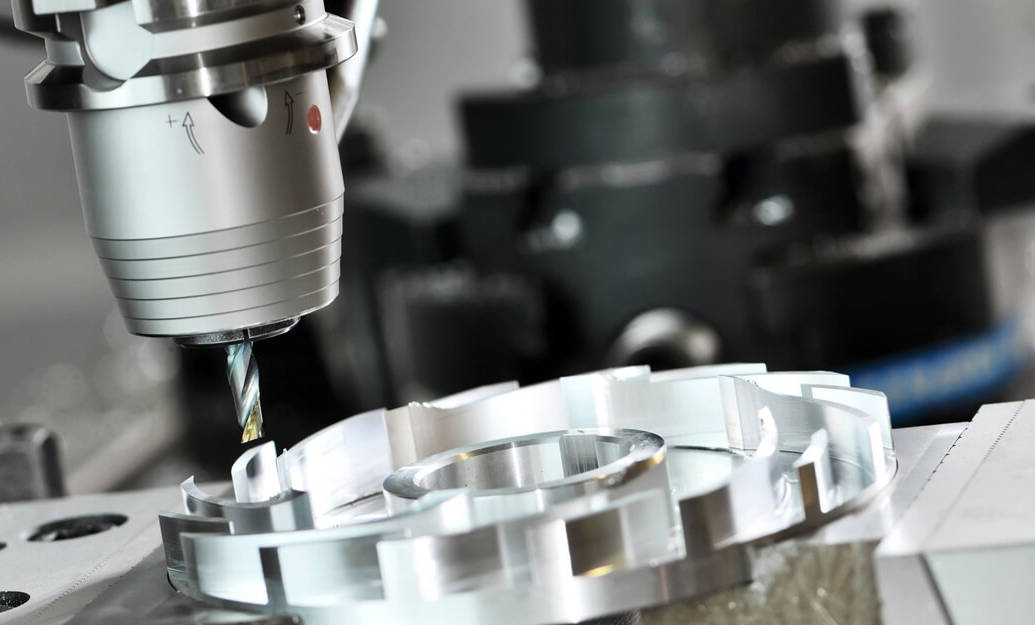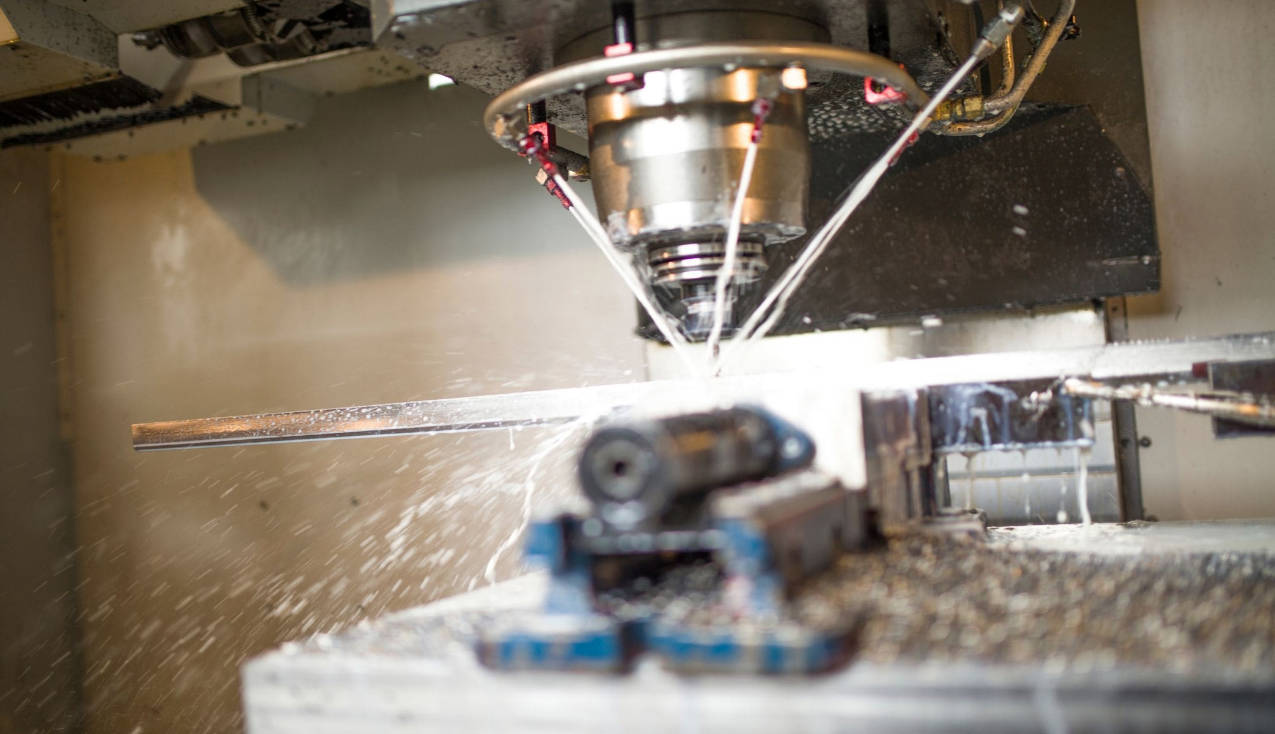CNC milling stainless steel is a demanding yet essential process in modern manufacturing, prized for producing strong, corrosion-resistant parts. The main challenges stem from the material’s inherent properties, including its tendency to work harden, its low thermal conductivity which traps heat at the cutting edge, and its high ductility which can lead to a built-up edge on the tool. Overcoming these requires a strategic approach combining the right cutting tools, optimized feeds and speeds, robust machine rigidity, and effective coolant application. Successfully navigating these factors is the key to achieving efficient machining and impeccable surface finishes.

Table of Contents
- The Fundamental Challenge: Why is Milling Stainless Steel So Difficult?
- Understanding Stainless Steel Grades for Machining
- Essential Strategies and Tips for Successful CNC Milling
- Achieving Superior Surface Finishes on Stainless Steel
- Common Mistakes to Avoid When Machining Stainless Steel
- Conclusion: Key Takeaways for Flawless Stainless Steel Milling
The Fundamental Challenge: Why is Milling Stainless Steel So Difficult?
Stainless steel isn’t a single material but a family of iron-based alloys containing at least 10.5% chromium. This chromium content is what provides its famous corrosion resistance. However, the same properties that make it so desirable in final applications also make it notoriously difficult to machine. Understanding these core challenges is the first step toward mastering the process.
The Problem of Work Hardening
Perhaps the most significant challenge is work hardening. This phenomenon occurs when the material is subjected to stress and deformation during the cutting process, causing its crystal structure to change and become significantly harder. If a cutting tool rubs against the surface without effectively cutting, it hardens a thin layer of the material. The next cutting edge then has to cut through this newly hardened layer, leading to accelerated tool wear, potential tool breakage, and increased cutting forces. The key to mitigating work hardening is to maintain a constant, positive cutting action with an appropriate chip load, ensuring you are always cutting underneath the previously hardened layer.
Low Thermal Conductivity and Heat Buildup
Unlike materials like aluminum or low-carbon steel that efficiently transfer heat away through the chips, stainless steel is a poor thermal conductor. This means the immense heat generated during milling doesn’t escape with the chip; instead, it concentrates in the cutting zone—specifically in the workpiece and the cutting tool. This extreme heat can cause the tool’s cutting edge to soften, deform, and wear out prematurely. It also increases the risk of thermal shock if coolant is applied intermittently. Effective heat management through high-pressure, high-volume coolant is not just recommended; it’s essential.
High Ductility and the Dreaded Built-Up Edge (BUE)
Many common grades of stainless steel, particularly in the austenitic family (like 304 and 316), are very tough and ductile. This “gummy” nature means the material tends to tear and smear rather than forming a clean, brittle chip. This often leads to a Built-Up Edge (BUE), where small particles of the workpiece material weld themselves to the tool’s cutting edge under the intense pressure and heat. A BUE effectively changes the tool’s geometry, leading to a poor surface finish, increased cutting forces, and ultimately, tool failure when the BUE breaks off, often taking a piece of the tool with it.
Chemical Reactivity and Tool Adhesion
The nickel and chromium content in stainless steel can create a chemical affinity with the materials in carbide cutting tools at high temperatures. This reactivity promotes adhesion, where the workpiece material sticks to the tool surface, contributing to BUE and causing crater wear on the rake face of the insert. The right tool coatings act as a thermal and chemical barrier, significantly reducing this effect and extending tool life.
Understanding Stainless Steel Grades for Machining
Not all stainless steels are created equal. Their machinability varies significantly based on their metallurgical family. Choosing the right machining parameters starts with identifying the type of stainless steel you are working with.
| Stainless Steel Family | Common Grades | Key Characteristics | Machinability Rating (Relative to 1212 Steel) |
|---|---|---|---|
| Austenitic | 303, 304, 316 | Most common, high corrosion resistance, high work hardening rate, very tough and “gummy.” | Poor to Fair (25-45%) – 303 is a “free-machining” grade with added sulfur. |
| Ferritic | 430, 446 | Magnetic, lower corrosion resistance than austenitic, less prone to work hardening. | Good (50-60%) – Chips break more easily. |
| Martensitic | 410, 420, 440C | Can be hardened by heat treatment, very strong, but more brittle. | Fair (45-55%) – Can be abrasive on tools, especially when hardened. |
| Duplex | 2205, 2507 | Mixed austenitic and ferritic structure, very high strength and corrosion resistance. | Poor (20-30%) – Requires very rigid setups and powerful machines. |
| Precipitation-Hardening (PH) | 17-4 PH, 15-5 PH | High strength, can be heat treated. Machinability varies greatly with condition. | Fair to Poor (30-50%) – Best machined in the solution annealed condition. |
Essential Strategies and Tips for Successful CNC Milling
Defeating the challenges of milling stainless steel requires a holistic approach. It’s not about one single trick, but a combination of carefully considered choices from the tool holder to the toolpath.
Choosing the Right Cutting Tools: Your First Line of Defense
Your choice of end mill or insert is paramount. Generic tools will fail quickly. Look for tools specifically designed for stainless steel with the following features:
- Substrate: A tough, fine-grain carbide substrate is necessary to resist chipping and breaking under the high cutting forces.
- Geometry: Look for a sharp cutting edge and a high positive rake angle. This geometry helps shear the material cleanly rather than plowing through it, reducing cutting forces and heat generation. A high helix angle (35-45 degrees) also helps with efficient chip evacuation.
- Coatings: A modern, high-performance coating is non-negotiable. Coatings like AlTiN (Aluminum Titanium Nitride) or TiAlN (Titanium Aluminum Nitride) are excellent choices. They provide a thermal barrier to protect the carbide substrate, increase surface hardness, and have a low coefficient of friction to prevent BUE.
Mastering Feeds and Speeds: The “Low and Slow” Myth Debunked
The old advice was always “low speed, high feed.” This is a good starting point, but it’s more nuanced. The real mantra should be: “Appropriate surface speed, constant and aggressive chip load.” You want the surface speed (SFM) to be low enough to manage heat but fast enough for efficiency. More importantly, the feed per tooth (chip load) must be high enough to get underneath the work-hardened zone from the previous cut. A light, rubbing cut is the fastest way to destroy a tool. Always consult your tool manufacturer’s recommendations and be prepared to adjust based on the sound and performance of the cut.
The Critical Role of Coolant and Lubrication
Coolant does two vital jobs: it lubricates the cut to reduce friction, and it evacuates heat. For stainless steel, both are critical. A trickle of flood coolant is insufficient. The ideal solution is high-pressure coolant (HPC), delivered through the spindle or directly at the cutting edge. This high pressure gets the coolant deep into the cutting zone, breaking the vapor barrier that can form from intense heat, and forcefully blasts chips out of the way to prevent re-cutting.
Machine and Workholding Rigidity: The Unshakable Foundation
Chatter (vibration) is the enemy of any machining operation, but it’s especially destructive when milling stainless steel. Any vibration will lead to an inconsistent chip load, causing the tool to rub and instantly work-harden the surface. Ensure your setup is as rigid as possible:
- Use a high-quality, powerful, and well-maintained CNC machine.
- Keep tool overhang as short as possible. Use stub-length end mills whenever the job allows.
- Employ robust workholding techniques, ensuring the workpiece is securely clamped and supported.
- Use high-quality tool holders like shrink-fit or hydraulic holders for maximum concentricity and clamping force.
Smart Toolpath Strategies: How You Cut Matters
The path your tool takes is as important as the tool itself. Modern CAM software offers advanced toolpaths that are perfect for stainless steel:
- Climb Milling: Whenever possible, use climb milling over conventional milling. It produces a thicker-to-thinner chip, which helps pull heat away and reduces rubbing, resulting in better tool life and surface finish.
- Trochoidal Milling / High-Efficiency Milling (HEM): These strategies use a smaller radial depth of cut but a much larger axial depth of cut, paired with a high feed rate. This maintains a constant, light tool engagement, spreads wear over a larger portion of the cutting edge, and allows for excellent chip evacuation and heat management.
Achieving Superior Surface Finishes on Stainless Steel
Getting a functional part is one thing; getting one with a beautiful, smooth surface finish is another. This requires a dedicated approach, often involving separate finishing passes.
The Finishing Pass: A Delicate Balance
A finishing pass is a very light cut taken after the main roughing operations are complete. The goal is to remove only a small amount of material to eliminate tool marks and achieve the desired surface roughness (Ra). For a finishing pass on stainless steel, you typically want to increase the surface speed (RPM) and decrease the feed rate (chip load) compared to your roughing parameters. This allows the tool to shear the material very cleanly, leaving a smoother surface behind. However, the depth of cut must still be sufficient to avoid rubbing and work hardening.
Tool Geometry for Finer Finishes
Tool selection is crucial for finishing. While a 4-flute end mill might be great for roughing, a tool with more flutes (e.g., 6 or 8) can produce a better finish because it allows for a higher table feed rate while maintaining a small chip load per tooth. Additionally, tools with a corner radius instead of a sharp corner are highly recommended for finishing. The radius helps to “wipe” the surface, smoothing out the cusps left between passes and producing a significantly better finish.
Post-Processing Techniques for a Perfect Sheen
For applications requiring a mirror-like or specific aesthetic finish, CNC milling is just the first step. Several post-processing techniques can be employed:
- Mechanical Polishing: Using progressively finer abrasives to smooth the surface.
- Electropolishing: An electrochemical process that removes a microscopic layer of material, resulting in a bright, smooth, and highly corrosion-resistant surface.
- Bead Blasting: Creates a uniform, non-directional matte finish.
- Passivation: A chemical treatment that removes free iron from the surface and enhances the natural chromium-oxide layer, maximizing corrosion resistance.
Common Mistakes to Avoid When Machining Stainless Steel
Even experienced machinists can fall into traps when working with stainless steel. Avoiding these common errors will save you time, money, and tooling.
- Ignoring Tool Wear: Pushing a dull tool is a recipe for disaster. A worn tool will increase cutting forces, generate more heat, and cause catastrophic work hardening. Implement regular tool checks and don’t hesitate to change an insert or end mill at the first sign of wear.
- Pecking or Dwelling: Never allow the tool to stop its feed motion while rotating against the workpiece. This “dwelling” will instantly generate extreme heat and work-harden the spot, making it nearly impossible for the tool to re-enter the cut.
- Insufficient Coolant: Simply having coolant present isn’t enough. Low pressure or poor aim can create a steam barrier, preventing the fluid from reaching the cutting edge. Ensure you have high volume and high pressure aimed directly at the cut.
- Using General-Purpose Toolpaths: A straight-line “pocketing” toolpath with a 50% stepover is inefficient and brutal on tools in stainless steel. It creates moments of full-width engagement in corners that spike tool load. Use modern HEM or trochoidal toolpaths.
Conclusion: Key Takeaways for Flawless Stainless Steel Milling
Successfully CNC milling stainless steel is a challenging but achievable art that blends science with hands-on experience. The path to success is paved with a deep respect for the material’s properties. By focusing on the core principles of using sharp, coated tools designed for stainless steel, maintaining a constant and aggressive chip load to stay ahead of work hardening, managing heat with abundant high-pressure coolant, and ensuring absolute system rigidity, you can transform this difficult material into high-precision, beautifully finished components. Embracing smart toolpath strategies and avoiding common pitfalls will not only improve your part quality but also dramatically extend your tool life, making your operations more efficient and profitable.
CNC Milling Stainless Steel, Machining stainless steel, stainless steel surface finish, challenges of milling stainless steel, best end mills for 304 stainless steel, feeds and speeds for milling stainless steel, how to get a good surface finish on stainless steel, coolant for machining stainless steel, work hardening stainless steel, Built-Up Edge (BUE), AlTiN coating, climb milling stainless steel, trochoidal milling



